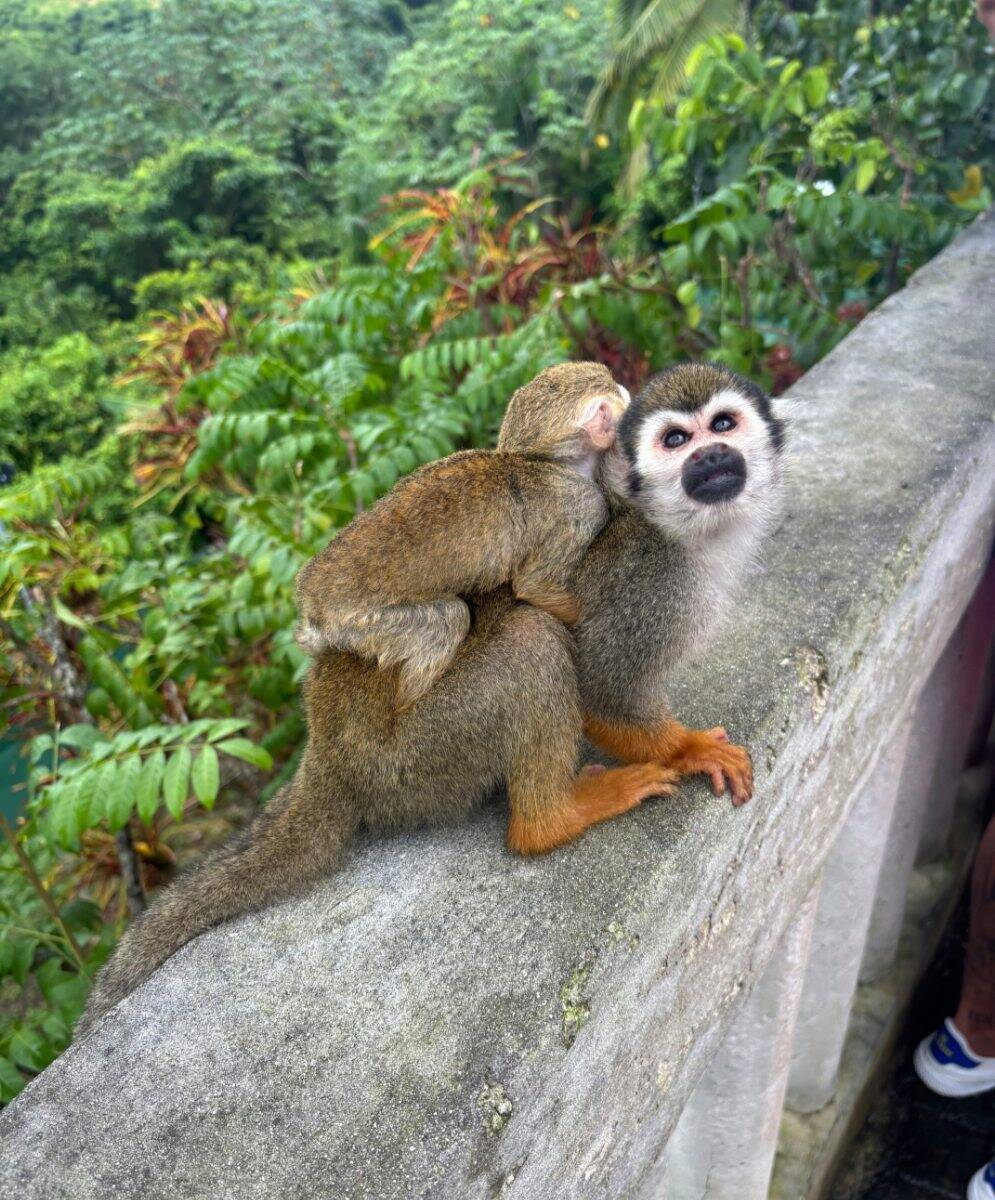Trapping tourists with captive monkeys
Advertisement
A friend and I recently went on vacation to the Dominican Republic. The highlight of our trip was a full-day jungle excursion, part of which involved interacting closely with monkeys. I would like to talk about this particular experience, as it made me rather uncomfortable – and not because the monkeys jumped on my head and climbed all over me.
As an animal lover, having tiny, adorable squirrel monkeys on me was admittedly enjoyable. But as a strong advocate for animal welfare and liberation, I had a real problem with what I saw and heard during my visit.
Perhaps naively, I initially thought this part of the excursion simply meant visiting a national park or other natural area where monkeys abound and habitually interact with people. Top of mind for me was the temple in Bali that macaques frequent voluntarily – to steal from tourists and hold their valuables for ransom, but still.

Photo by Tracy Groenewegen
There are ways to incorporate animals into travel that prioritize animal welfare over economics.
The squirrel monkeys, it turned out, could not be said to be there voluntarily. In fact, no living species of monkey is native to the Dominican Republic. As the guide told our group, the attraction opened with 15 wild squirrel monkeys taken from other areas in Central and South America. Ten years later, their population – which is in no way controlled, I was told – has since grown to 81 monkeys, spread across four “habitats.”
In reality, these are captive environments. The lush tropical vegetation in the enclosure we visited made it no less a cage, nor did the absence of an overhead barrier; the mesh perimeter fencing was equipped all along the top with electric wiring to keep the monkeys from escaping their roughly one-acre enclosure.
During our brief orientation, we were instructed to bring nothing but our phones into the enclosure for the sake of the monkeys’ safety. This rule was not strictly enforced, however, and we were told that a monkey had died a week prior because a child had given the monkey candy.
Our 40 minutes in the cage were spent taking photos with the monkeys, who were drawn to us by bits of fruit and vegetables from the handler. The monkeys looked happy and healthy enough, and we were told they all had names.
Still, as I’ve since learned, there are better ways to incorporate animals into our travel and support local economies – ways that prioritize animal welfare. Ethical wildlife tourism exists – learn from my mistake and do your research!

Tracy Groenewegen
South Osborne community correspondent
Tracy Groenewegen is a community correspondent for South Osborne. She can be reached at tracy.groenewegen@gmail.com
Our newsroom depends on a growing audience of readers to power our journalism. If you are not a paid reader, please consider becoming a subscriber.
Our newsroom depends on its audience of readers to power our journalism. Thank you for your support.



